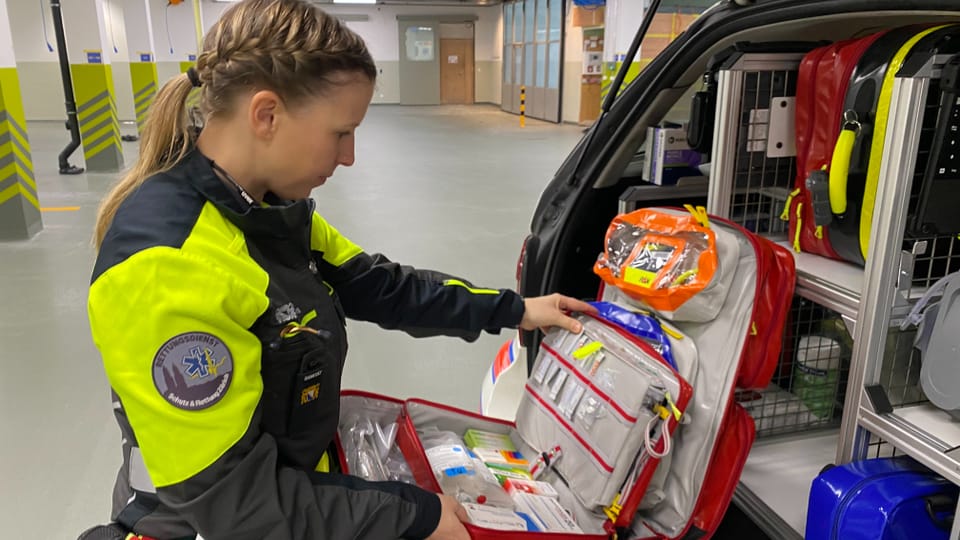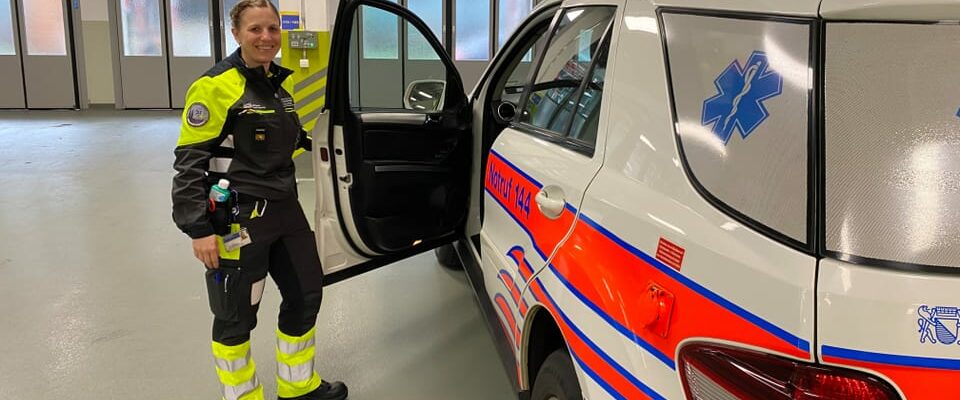Contents
Because the emergency services are responding, there is now an alternative for minor emergencies in Zurich.
In the event of a medical emergency, dial 144: You learn this as a child in Switzerland. The emergency number is actually intended for serious emergencies, but it is also called again and again in cases where it is not a matter of life and death.
Meanwhile, the paramedics are coming to the attack: In 2023, Schutz und Rescue Zurich carried out more than 41,000 medical missions. That was a little less than in 2022, but in the years before that the number of deployments rose constantly.
In order to relieve the burden on the emergency service, Zurich Protection and Rescue has created a new profession: the “light paramedic” or, more technically correctly, the “preclinical specialist”.
Traveling alone and without blue lights
What’s special about it is that these preclinical specialists don’t go out in pairs as before, but alone and without blue lights. Zurich Protection and Rescue currently employs two of them, and five more are still in training. The goal is to one day be available around the clock.
Legend:
Anja Bodenmann is one of the first two “preclinical specialists” trained by Protection and Rescue. The training lasted around 1,800 hours.
SRF/Elisabetta Antonelli
“After a long preparation and project period, we can now finally start,” says Michael Schumann, head of the medical department at Protection and Rescue Zurich. In total, the preparation time took around three years.
The new profession was carefully evaluated and balanced, the medical and legal competencies were clarified and finally we had to wait for approval from the cantonal health department. This is now available.
After a long preparation and project period, we can now finally start.
The profession of “preclinical specialist” is also new in the Swiss rescue system. According to Michael Schumann, he is needed because the stakes have changed. Patients often do not need emergency care or even hospitalization. “There are more missions that don’t necessarily require an ambulance with two qualified paramedics,” says Schumann.
Things really get going in April
When someone dials the emergency number 144, the first decision made is whether it is life-threatening or not. After further questions, a preclinical specialist is then called in, depending on the situation. For example, if a patient “only” complains about blood pressure problems or dizziness.

Legend:
As a “preclinical specialist”, Anja Bodenmann can also administer medication.
SRF/Elisabetta Antonelli
“We can examine the patient at home and then assess on site whether a serious illness can actually be ruled out,” explains Anja Bodenmann, one of the first two “preclinical specialists” from Protection and Rescue Zurich.
After the examination, she can also treat the patient directly, says Bodenmann. “We can also advise how the patient should behave if the symptoms do not improve. Whether he should go to the family doctor or go to the hospital.”
In March, the two specialists were still on the road with an emergency doctor. Then you go to the medical director for an examination. From April onwards, they went out on their own, says Flavia Bütler, head of the medical education department at Zurich Protection and Rescue.
It should be worth it for everyone – as Michael Schumann says. In 2022 alone, with these new specialists, almost 2,000 patients would probably not have had to go to hospital.
Regional Journal Zurich Schaffhausen, March 11, 2024, 12:03 p.m.; hofn/ante; grud;geta
